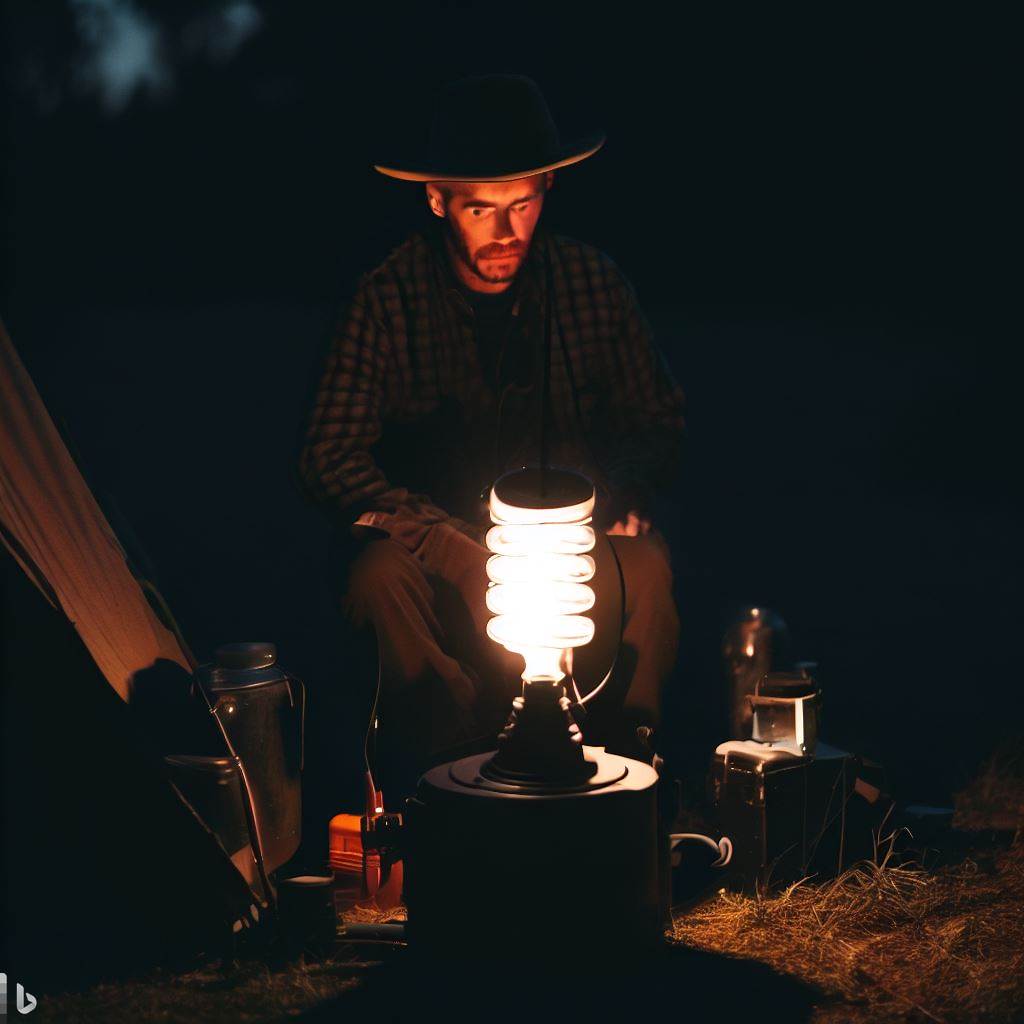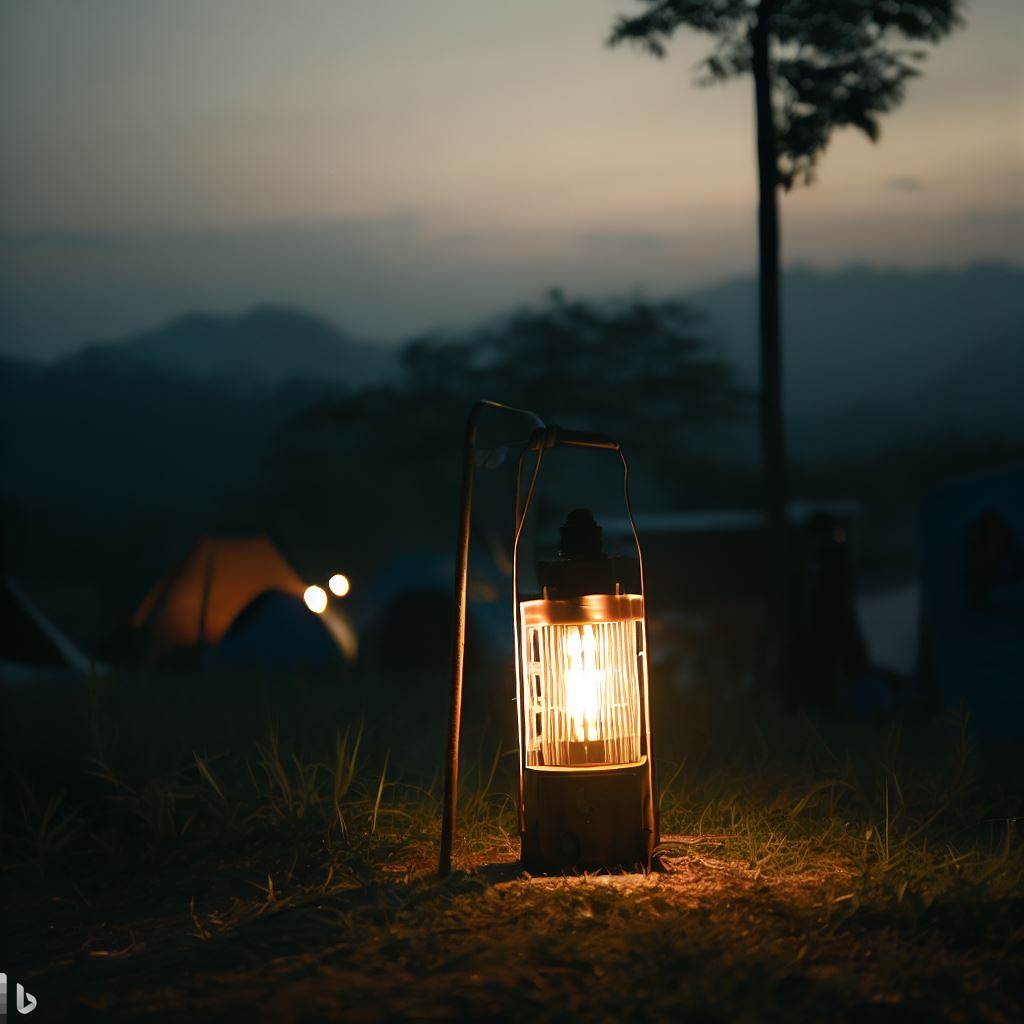Welcome to our blog post on the most efficient Off grid lighting system! This article will explore the fascinating world of sustainable lighting solutions that can illuminate your space even when disconnected from the conventional power grid. With technological advancements, Off grid lighting has become attractive for those seeking eco-friendly and cost-effective illumination. Let’s explore the details and discover the perfect lighting system for your off-grid needs.
What is Off Grid Lighting?
Off grid lighting refers to systems operating independently of the traditional electrical grid. These systems harness renewable energy sources, such as solar or wind power, to generate electricity, ensuring a sustainable, eco-friendly lighting solution. Unlike grid-connected lighting, Off grid lighting offers flexibility and independence, making it an excellent choice for remote locations or areas prone to power outages.
Benefits of Off-Grid Lighting:
- Energy Independence: Off grid lighting systems empower individuals and communities to rely on renewable energy sources, reducing their dependence on fossil fuels and the conventional power grid. By embracing off-grid lighting, you contribute to a greener and more sustainable future.
- Cost Savings: Off grid lighting systems require minimal maintenance and incur significantly lower operational costs than traditional grid-connected lighting once installed. You can save money in the long run with reduced energy bills and long-lasting LED bulbs.
- Flexibility and Mobility: Off grid lighting solutions are portable and adaptable, making them ideal for various applications. Off grid lighting provides flexible and mobile illumination options, whether camping, living in a remote area, or organizing an outdoor event.
- Emergency Preparedness: During natural disasters or power outages, Off grid lighting ensures a reliable light source, enhancing safety and security. With battery backups and efficient energy storage, you can navigate the darkness without compromising your daily activities.
The Most Efficient Off grid lighting Systems:
- Solar-Powered Lighting: Solar-powered lighting systems utilize photovoltaic panels to convert sunlight into electricity. These systems store the energy in batteries during the day, providing illumination during nighttime. Solar-powered lights are easy to install, require minimal maintenance, and offer excellent energy efficiency.
- Wind-Powered Lighting: Wind-powered lighting systems utilize wind turbines to generate electricity. Wind-powered lights can be a reliable and efficient Off grid lighting option in locations with consistent wind patterns, such as coastal areas or high-altitude regions.
- Hybrid Lighting Systems: Hybrid lighting systems combine multiple renewable energy sources, such as solar and wind power, to ensure consistent and reliable energy generation. These systems are particularly suitable for areas with varying weather conditions, as they maximize energy production throughout the year.
How do I light off the grid in my house?
To light off the grid in your house, you can follow these steps:
- Assess your energy needs: Calculate the energy required to power your lighting fixtures. Consider factors such as the number of lights, their wattage, and the estimated hours of usage per day.
- Determine renewable energy sources: Identify the renewable energy sources available to you. The most common options for Off grid lighting are solar power and wind power. Assess the feasibility of harnessing these energy sources based on factors such as sunlight exposure or wind patterns in your area.
- Install solar panels or wind turbines: Depending on the chosen energy source, install solar panels on your roof or a suitable location with maximum sunlight exposure or set up a wind turbine if you have a site with consistent wind flow. Ensure proper installation by consulting with professionals or following manufacturer guidelines.
- Battery storage: Incorporate a battery storage system to store the energy generated by your renewable source. This will provide power for your lighting during non-sunlight or low-wind periods. Select batteries with sufficient capacity to meet your energy needs.
- Choose energy-efficient lighting: Opt for energy-efficient lighting fixtures, such as LED bulbs, which consume less electricity than traditional incandescent bulbs. LED lights also have a longer lifespan, reducing the frequency of bulb replacements.
- Install lighting fixtures: Set up your lighting fixtures strategically, considering the layout and purpose of each room. Ensure the institutions are compatible with your chosen lighting system and connect them to the battery storage system.
- Implement lighting controls: Install lighting controls, such as switches or dimmers, to optimize energy usage. This allows you to adjust lighting levels based on your needs, conserving energy when not required.
- Regular maintenance: Maintain your Off grid lighting system by periodically cleaning solar panels, checking connections, and inspecting batteries. Regular maintenance ensures optimal performance and extends the lifespan of your system.
Remember to consult with professionals or seek expert guidance in renewable energy systems to ensure a safe and efficient Off grid lighting setup in your house.
What bulbs are best for off-grid living?
When it comes to off-grid living, selecting the right bulbs is crucial for optimizing energy efficiency and extending the lifespan of your lighting system. The following types of bulbs are considered the best options for off-grid living:
- LED (Light-Emitting Diode) Bulbs are highly recommended for Off grid lighting due to their exceptional energy efficiency. They consume significantly less energy than traditional incandescent bulbs, making them ideal for conserving power in off-grid setups. LED bulbs also have a longer lifespan, reducing the frequency of bulb replacements and the associated costs.
- CFL (Compact Fluorescent Lamp) Bulbs: CFL bulbs are another energy-efficient option for off-grid lighting. They use up to 75% less energy than incandescent bulbs and have a longer lifespan. CFL bulbs are available in various wattages and colour temperatures, providing a range of options to suit different lighting requirements.
- Solar-Powered LED Bulbs: If you have a solar-powered lighting system, consider using solar-powered LED bulbs. These bulbs are designed to charge during the day using solar energy and illuminate at night. Solar-powered LED bulbs are energy-efficient and can operate for several hours on a single charge, making them an excellent choice for off-grid living.
- DC (Direct Current) Bulbs: If your Off grid lighting system operates on DC power, such as from batteries or a solar panel, using DC bulbs is more efficient than converting DC to AC (alternating current) for standard bulbs. DC bulbs are designed to operate on low-voltage DC power, reducing energy loss during conversion and ensuring optimal performance.
When selecting bulbs for off-grid living, consider the desired brightness, colour temperature, and compatibility with your lighting system. Choosing bulbs with lower wattages is advisable to minimize energy consumption without compromising on lighting quality.
Regardless of the bulb type, always ensure they are compatible with your lighting fixtures and follow the manufacturer’s guidelines for installation and usage. Regularly check and maintain your bulbs to ensure they are in good condition, maximizing their lifespan and efficiency in your off-grid living setup.
What is off-grid solar lighting?
Off-grid solar lighting is a lighting system that operates independently of the traditional power grid by harnessing solar energy. It utilizes solar panels to capture sunlight and convert it into electricity, which is then stored in batteries for later use. Off-grid solar lighting provides an eco-friendly, sustainable, and cost-effective lighting solution in areas with limited or unreliable access to the electrical grid.
The components of an off-grid solar lighting system typically include the following:
- Solar Panels: These photovoltaic panels capture sunlight and convert it into direct current (DC) electricity. They are usually mounted on rooftops, poles, or other suitable locations to maximize sun exposure.
- Charge Controller: The charge controller regulates the flow of electricity from the solar panels to the batteries. It ensures the batteries are charged safely and efficiently, preventing overcharging or damaging the battery bank.
- Battery Bank: The battery bank stores the electricity generated by the solar panels. It provides a reserve of energy for nighttime or periods of low sunlight. Deep cycle batteries, such as lead-acid or lithium-ion batteries, are commonly used in off-grid solar lighting systems.
- Lighting Fixtures: These are the light sources in the off-grid solar lighting system. LED (Light-Emitting Diode) bulbs are commonly used for their energy efficiency, longevity, and brightness. The lighting fixtures can be installed indoors or outdoors, depending on the lighting requirements.
- Wiring and Controls: Wiring connects the various components of the system, allowing the flow of electricity. Controls such as switches or timers enable users to turn the lights on or off and adjust brightness levels as needed.
Off-grid solar lighting systems offer several benefits. They provide reliable lighting in remote areas or during power outages, enhancing safety and security. They are environmentally friendly, using clean and renewable solar energy to reduce carbon emissions. Off-grid solar lighting systems also offer cost savings in the long run, as they eliminate the need for grid electricity and have minimal operating costs.
Off-grid solar lighting systems offer a sustainable and efficient solution for residential, commercial, or outdoor lighting purposes, enabling individuals and communities to access reliable lighting even without being connected to the electrical grid.
FAQ:
Q1. How long do Off grid lighting systems last?
Ans. The lifespan of Off grid lighting systems depends on various factors, including the quality of components, maintenance, and battery lifespan. Generally, high-quality systems can last 10-20 years or more.
Q2. Can Off grid lighting systems power other appliances?
Ans. Yes, some Off grid lighting systems can power small appliances, such as fans or charging stations, depending on their energy generation capacity and the connected load.
Q3. Are Off grid lighting systems weather-resistant?
Ans. Yes, Off grid lighting systems are designed to withstand various weather conditions, including rain, snow, and extreme temperatures. However, regular maintenance is necessary to ensure optimal performance and longevity.
Conclusion:
Off grid lighting systems offer a sustainable and efficient way to illuminate spaces without relying on the traditional power grid. These systems provide energy independence, cost savings, and flexibility by harnessing renewable energy sources, such as solar or wind power. Whether you’re looking to light up your off-grid cabin or camping site or reduce your carbon footprint, Off grid lighting is the way to go. Embrace this innovative technology and brighten your surroundings while contributing to a greener planet.
Remember, the most efficient Off grid lighting system will depend on your specific needs and location. Evaluate your energy requirements, consider the available renewable resources, and consult with professionals to choose the perfect lighting solution. Let sustainability and efficiency guide your path towards a brighter future.
Related Articles:
How to Install an Off Grid Outdoor Shower?
What is Maple Syrup Evaporator?



